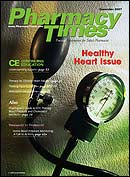Publication
Article
Pharmacy Times
WOMEN'S HEALTH WATCH
Annual Breast MRIs Touted for ?Very High Risk? Women
The American Cancer Society (ACS) has released new recommendationsfor testing women for breast cancer. One recommendationis that women at ?very high risk? receive magneticresonance imaging (MRI) along with their annual mammograms.
A recent study compared MRI, mammography, and ultrasoundin 171 women whose lifetime breast cancer risk wasconsidered ?very high? (20% or more). Of the 6 cancers diagnosed,MRI detected all 6; the mammograms found only 2, andthe ultrasound 1. Only the MRI detected 4 cancers in womenwith dense breast tissue. The findings were published in theOctober 2007 issue of Harvard Women?s Health Watch.
The ACS cautioned, however, that women at average riskof breast cancer do not need the additional MRI screenings,because these screenings could lead to unnecessary biopsiesin healthy women. The procedure also is costly, andmany insurance companies will not pay for an MRI for anaverage-risk woman. For most women over age 40, a yearlymammogram and clinical breast examination are sufficient,the ACS said.
Low Vitamin D = GreaterRisk of Hip Fracture
According to a study led by researchers from the Universityof Pittsburgh Graduate School of Public Health, women withlow levels of vitamin D have a greater risk of experiencing ahip fracture. The researchers evaluated the data on 400patients enrolled in the Women?s Health InitiativeObservational Study Cohort who had a hip fracture over aperiod of 7.1 years. The patients were tested for levels of 25-hydroxyvitamin D, an indicator of vitamin D status in theblood, and compared them with the levels for a group of controls.The investigators noted that, as the levels of vitamin Ddecreased, the risk of hip fractures increased.
?The risk of hip fractures was 77% higher among womenwhose [vitamin D] levels were at the lowest concentrations,?the researchers said. ?This effect persisted even when weadjusted for other risk factors such as body mass index, familyhistory of hip fracture, smoking, alcohol use, and calciumand vitamin D intake.? Their findings were presented inSeptember 2007 at the 29th annual meeting of the AmericanSociety for Bone and Mineral Research in Hawaii.
That Third Drink Linked toCancers in Women
Several studies have shown more reasons why womenshould consider cutting back on their alcoholic intake ifthey are heavy drinkers. Investigators studied a group of41,574 postmenopausal women and followed theirdrinking habits for an average of 8 years. The researchersfound that women who drank more than 2 drinks a dayhad more than twice the risk of endometrial cancer. Thisfinding was published online August 31, 2007, and was toappear in a print issue of the International Journal ofCancer.
Another study, from the Kaiser Permanente MedicalCare Program, found that all types of alcohol add equallyto a woman?s risk. There had been debate as towhether 1 form of alcohol poses a greater risk. Theresearchers studied the drinking habits of 70,033 womenbetween 1978 and 1985. By 2004, 2829 of these womenwere diagnosed with breast cancer. Those who drank 3or more alcoholic drinks daily raised their risk by 30%. Nodifference was found in what types of alcohol thewomen drank in relation to their cancer risk.
Don?t Panic! It Could Raise Heart Disease Risk
Postmenopausal women who haveexperienced at least 1 panic attackcould be at a greater risk of heart disease,stroke, and even death. A studyconducted by Harvard Medical Schoolshowed that older women (aged 51 to83 years) with a history of panic attackswere 4 times more likely to have heartdisease than similarly aged womenwho never had an attack. Even afterrisk factors were controlled for, womenwho had a panic attack had a greaterrisk of having cardiovascular (CV) illnessor dying after an average of 5 years.
The researchers looked at data gatheredfrom 3369 postmenopausalwomen who completed questionnairesabout the occurrence of panic attacksin the past 6 months. After an averageof 5.3 years of follow-up, the investigatorsgathered information on heart disease,stroke, and death from any cause.After adjusting for other risk factors forCV disease, they found that full-blownpanic attacks were associated with a 4-fold higher risk of heart disease, almosttwice the risk of stroke, and a 75%increase in risk of death from anycause, compared with women who hadnot experienced an attack. The findingswere published in the October 2007issue of the Archives of GeneralPsychiatry.
F A S T F A C T : One in 3 asthma patients uses a rescue inhaler at least daily, and 73% use one at least once a month.







